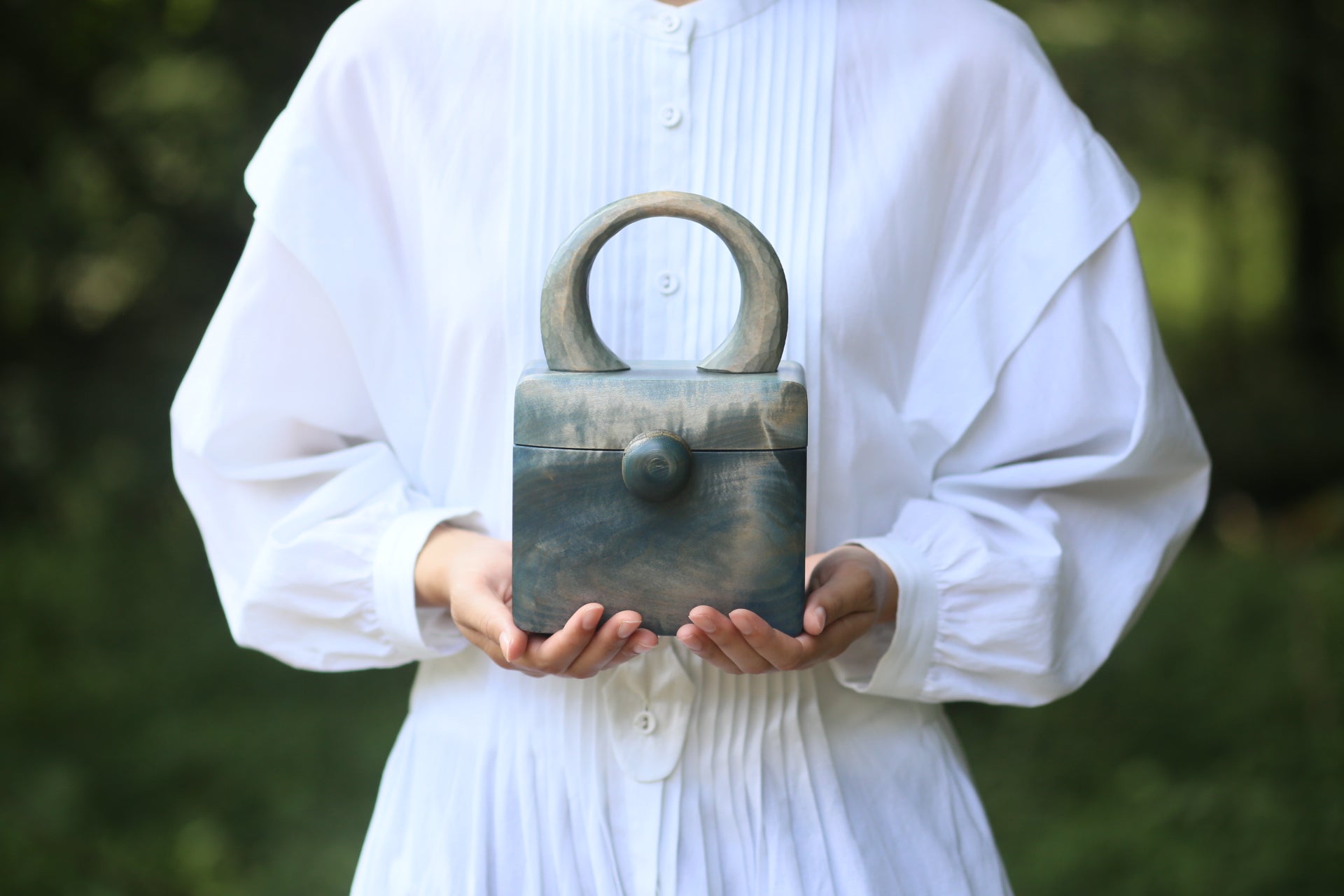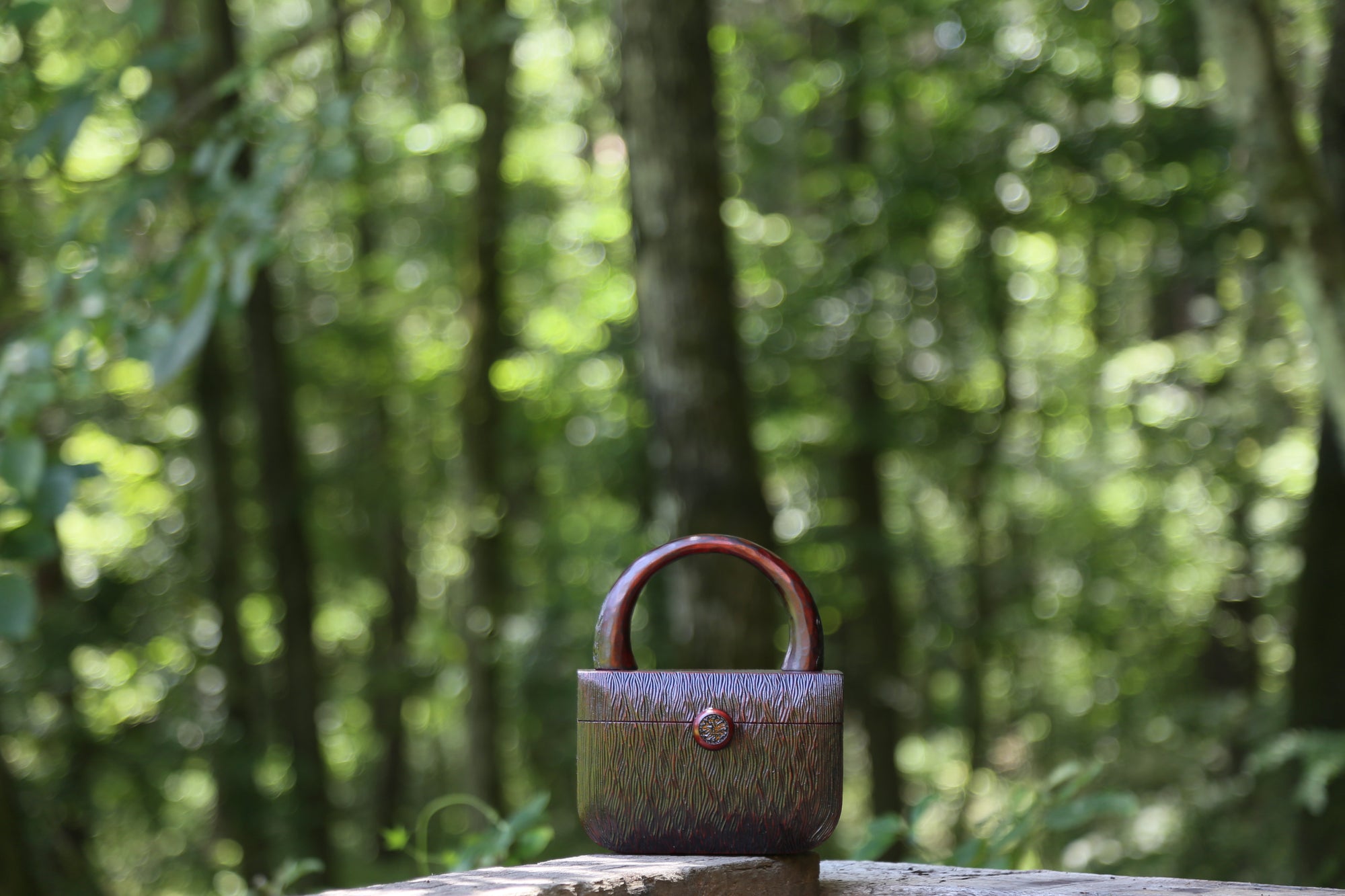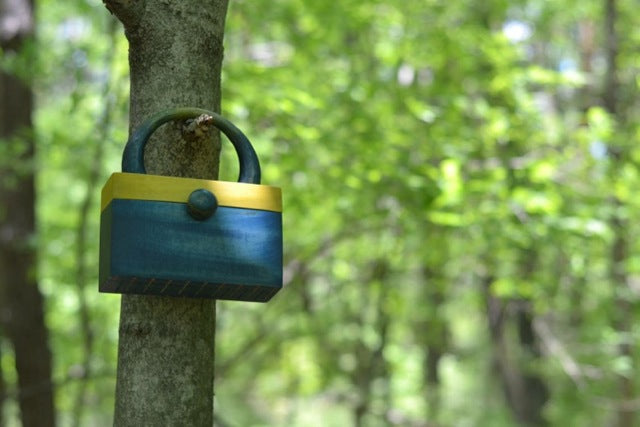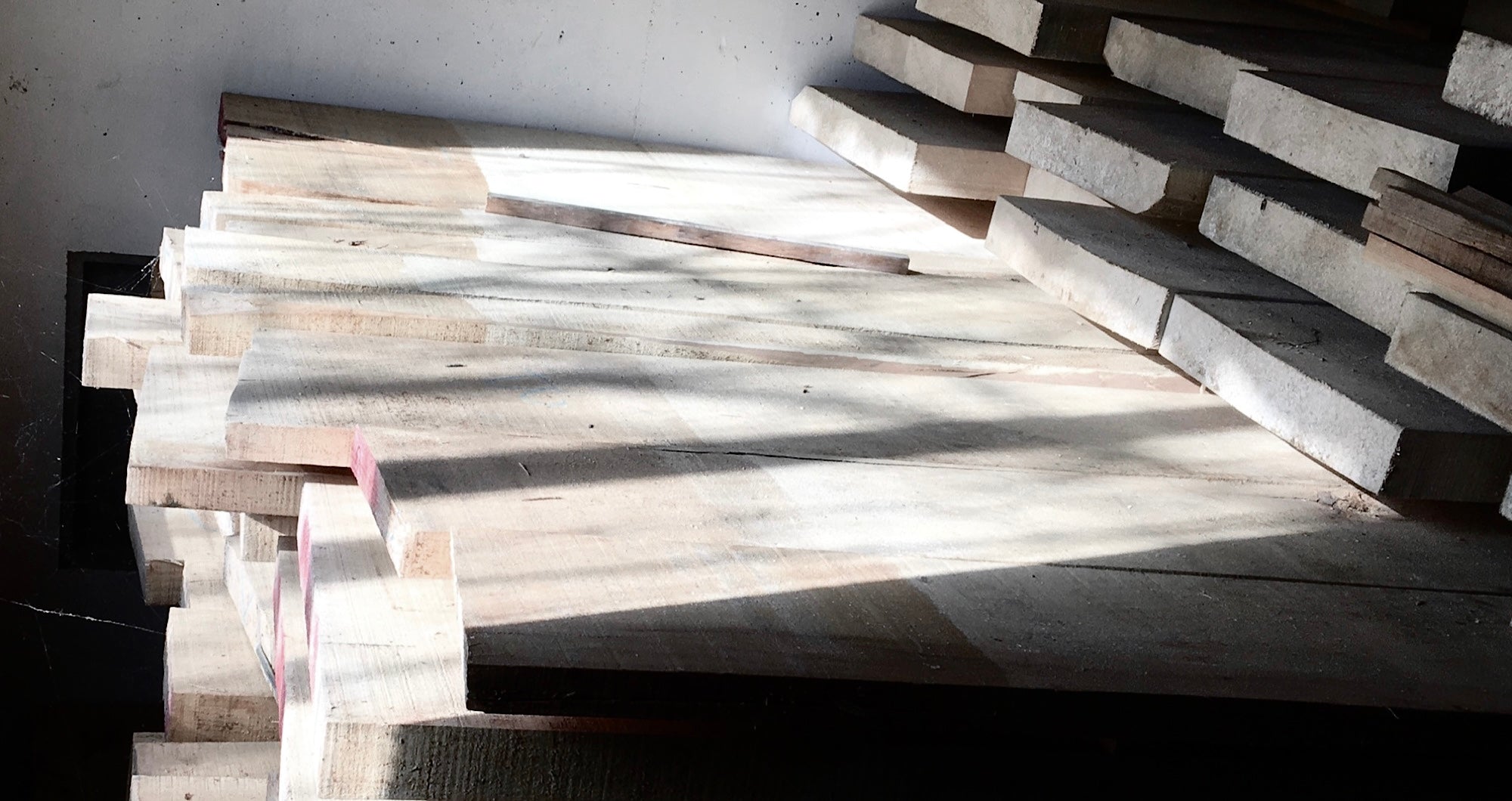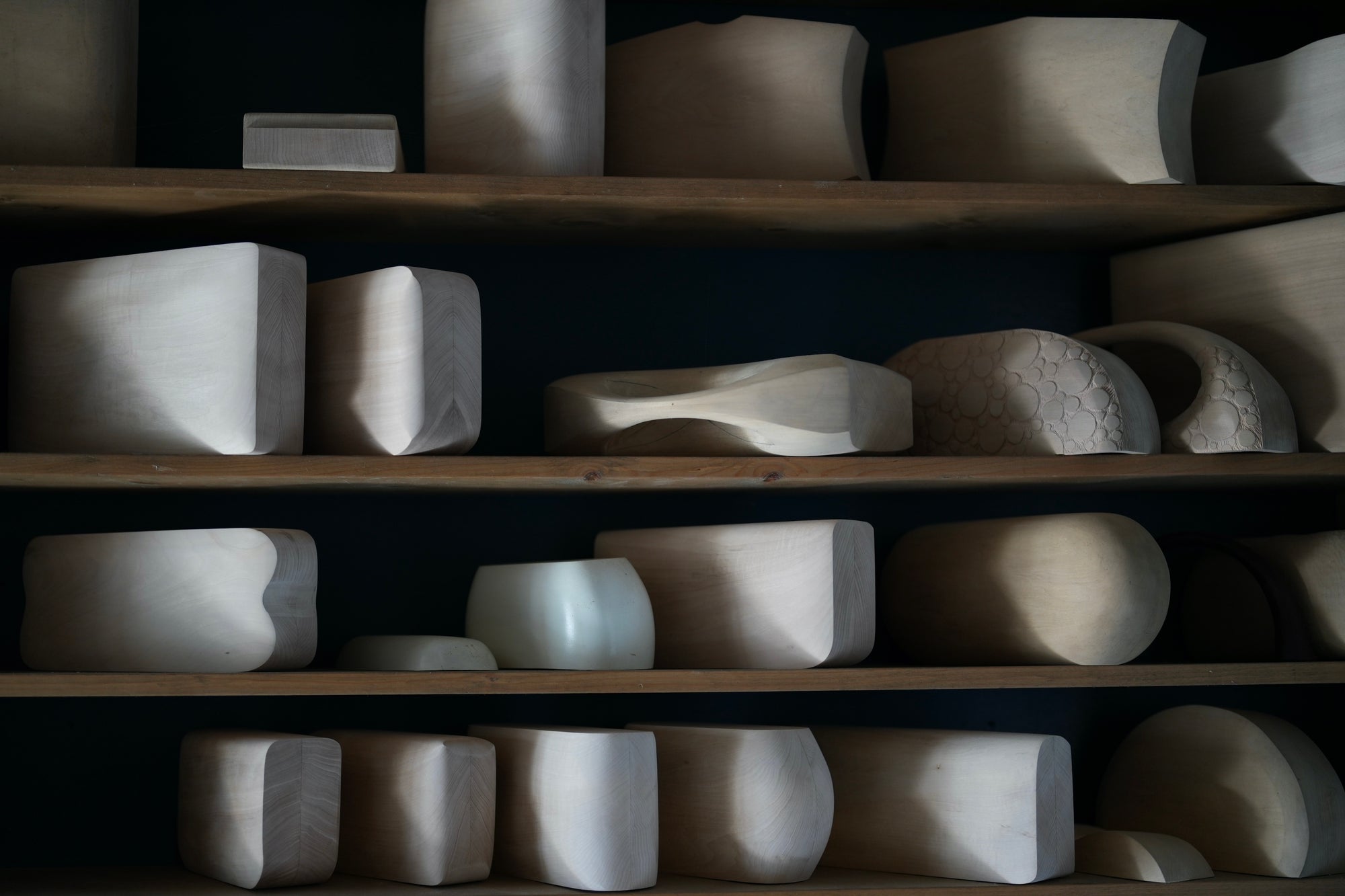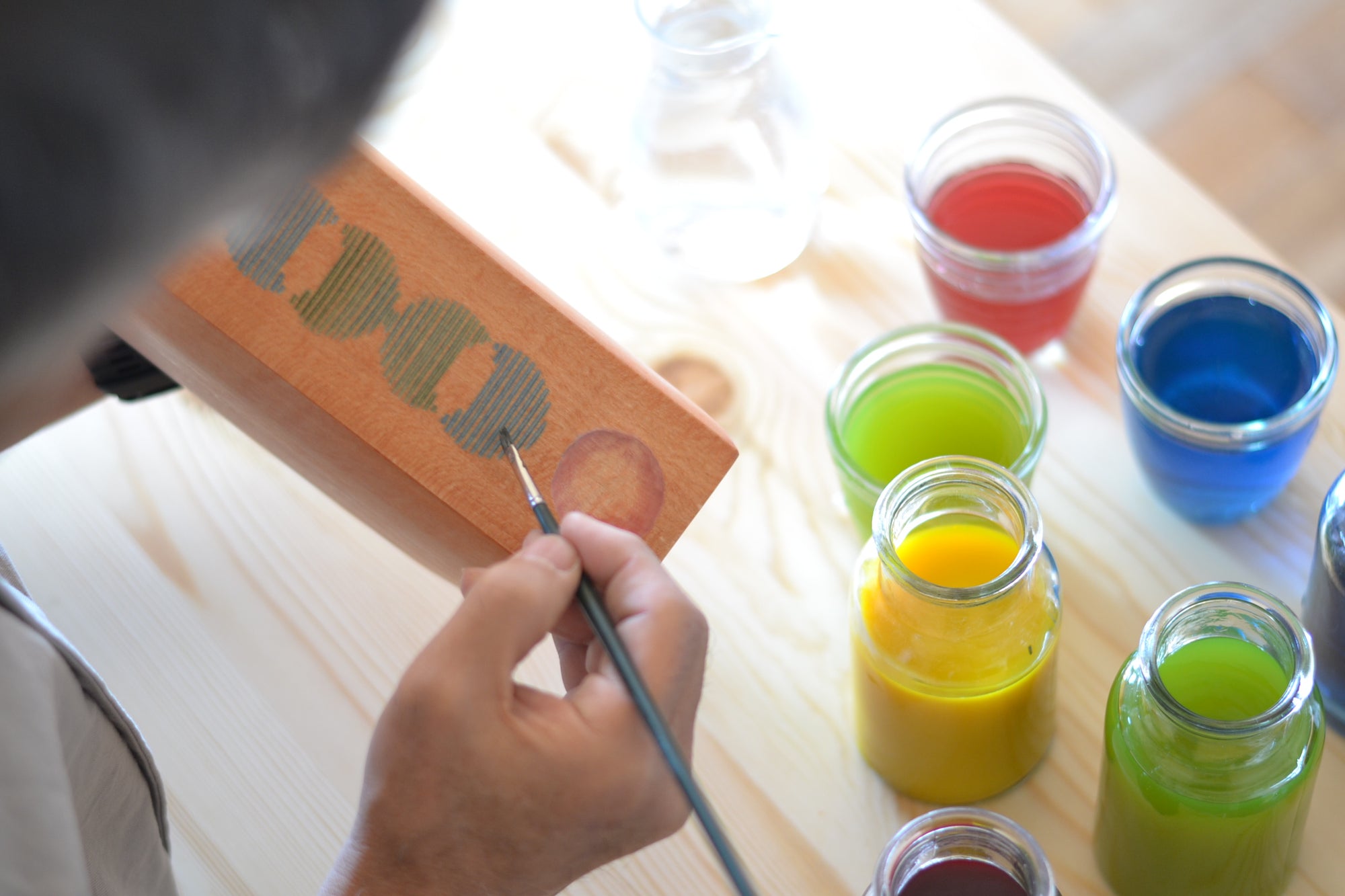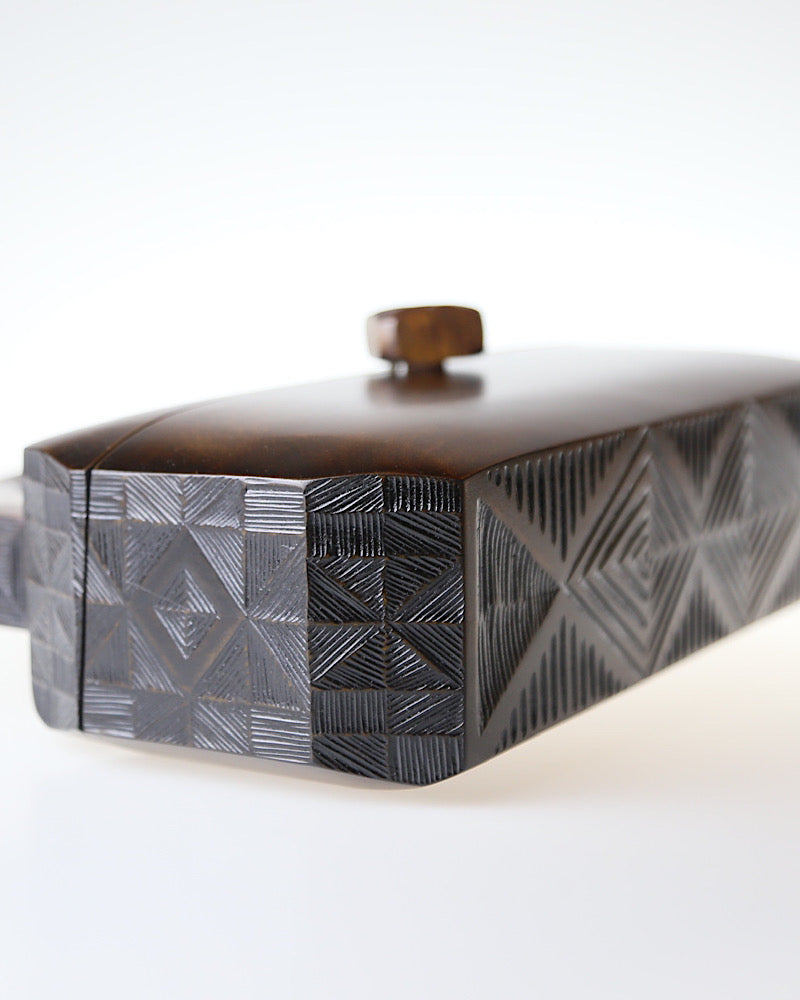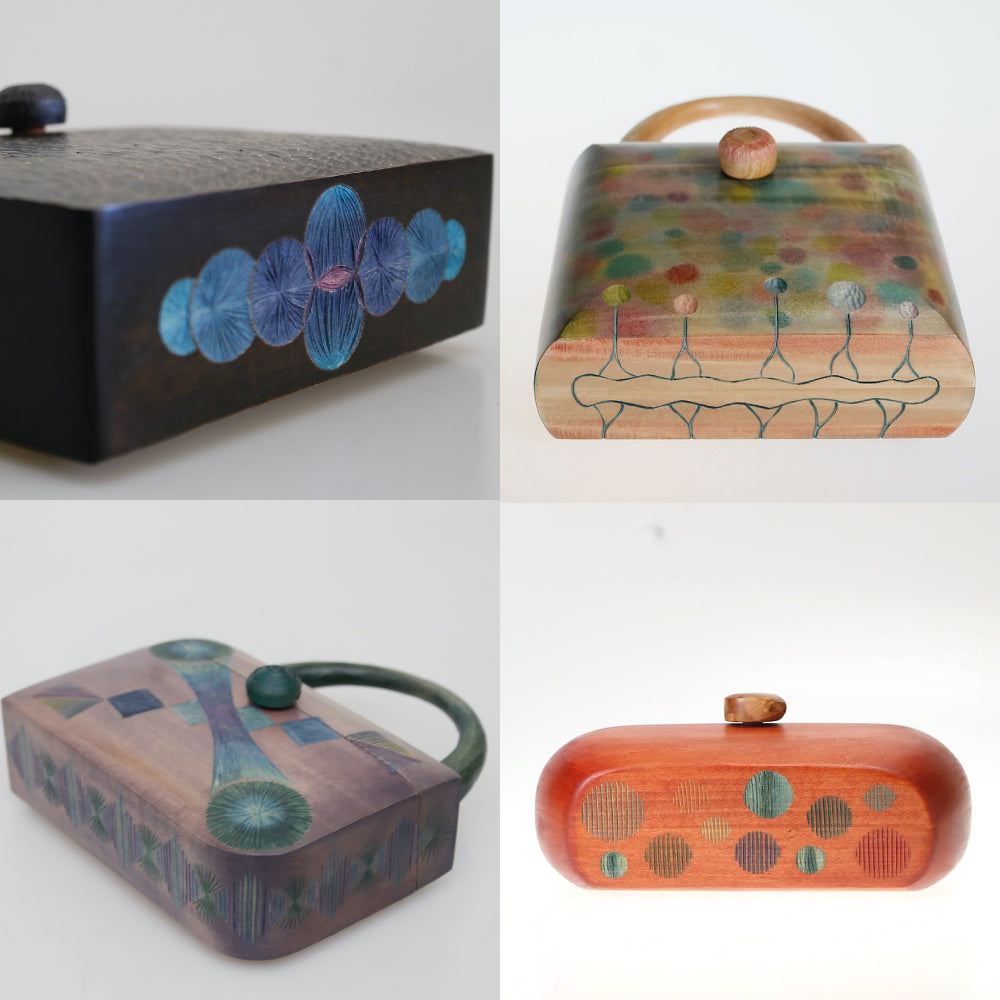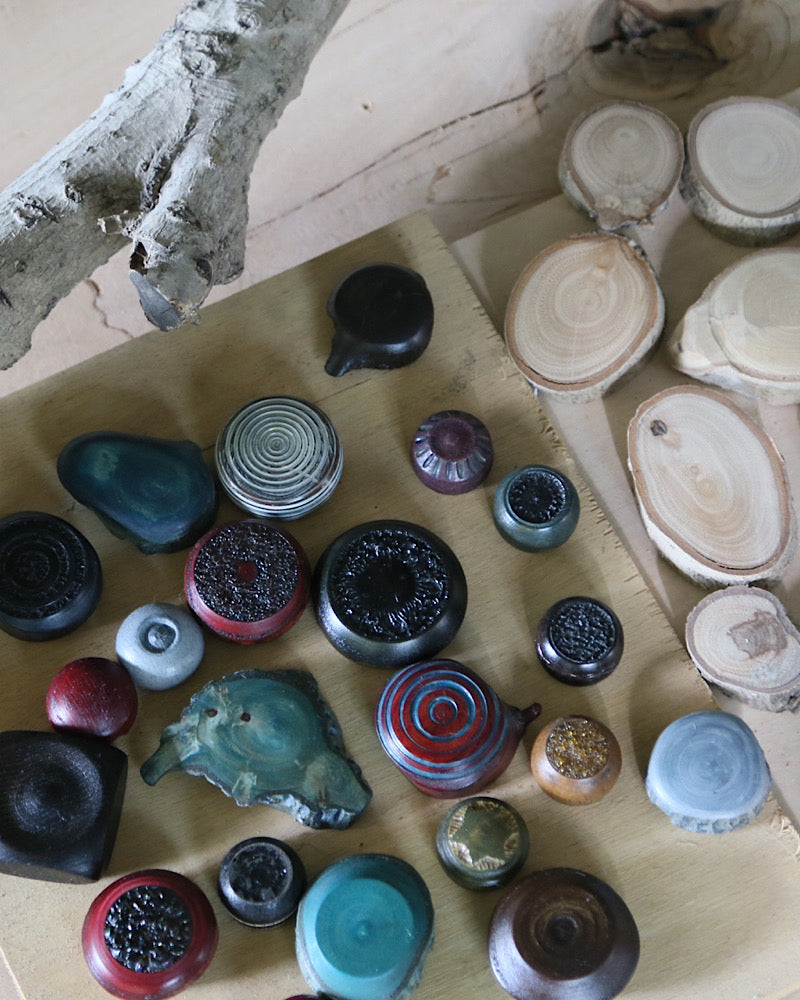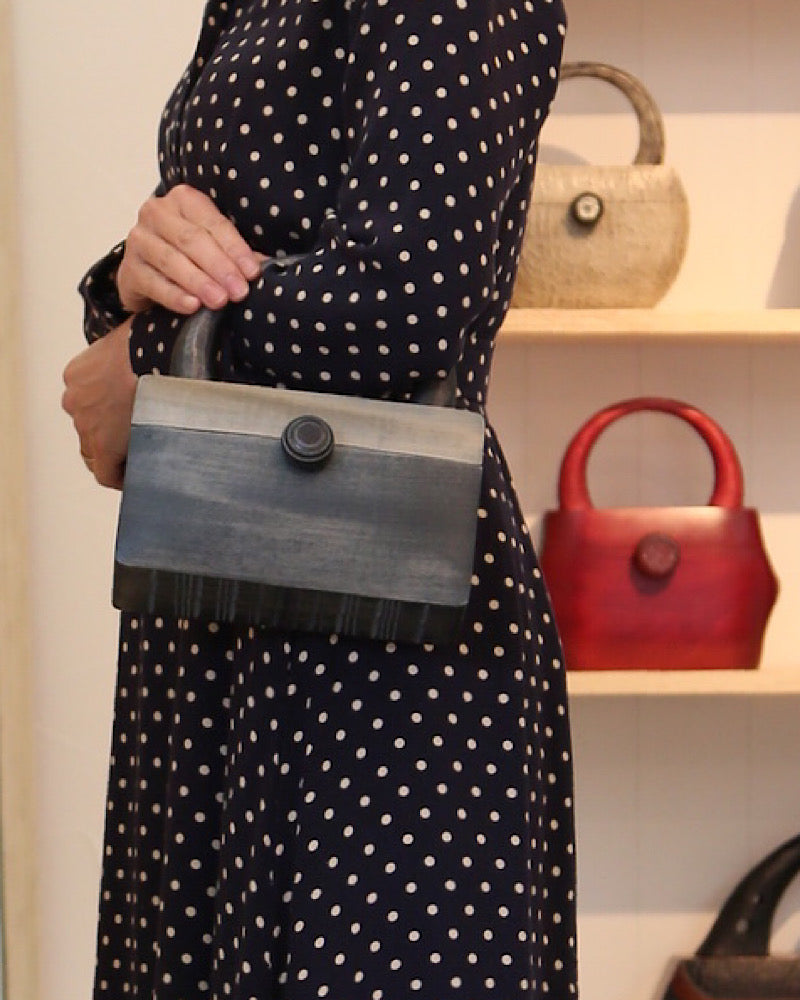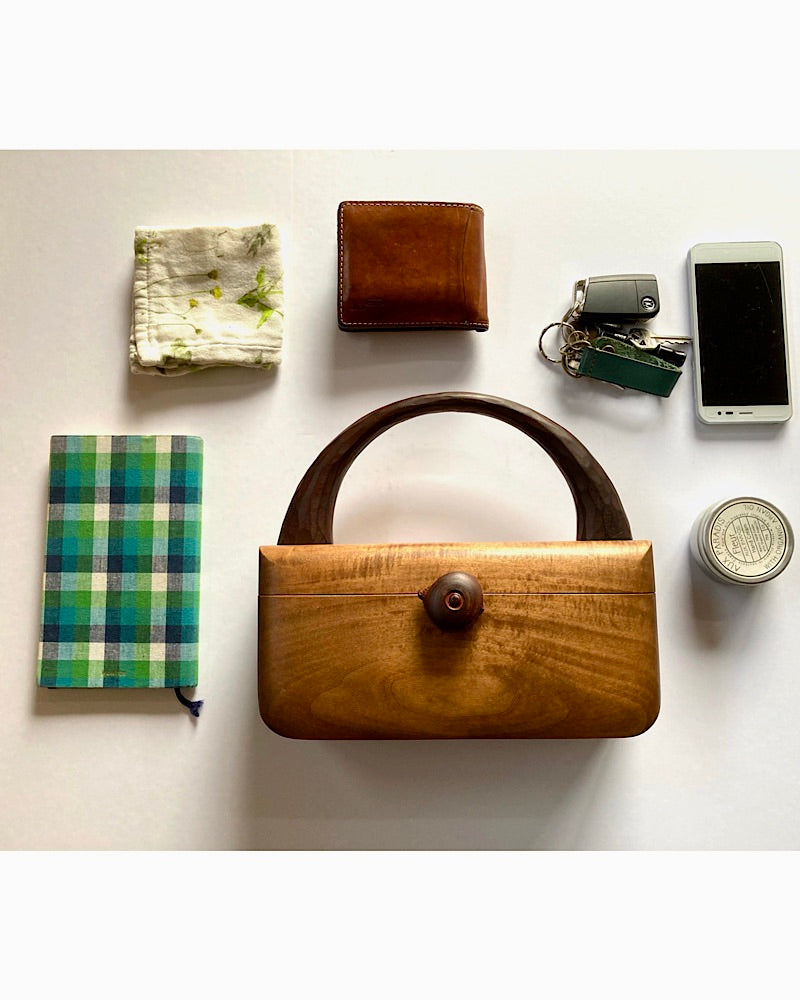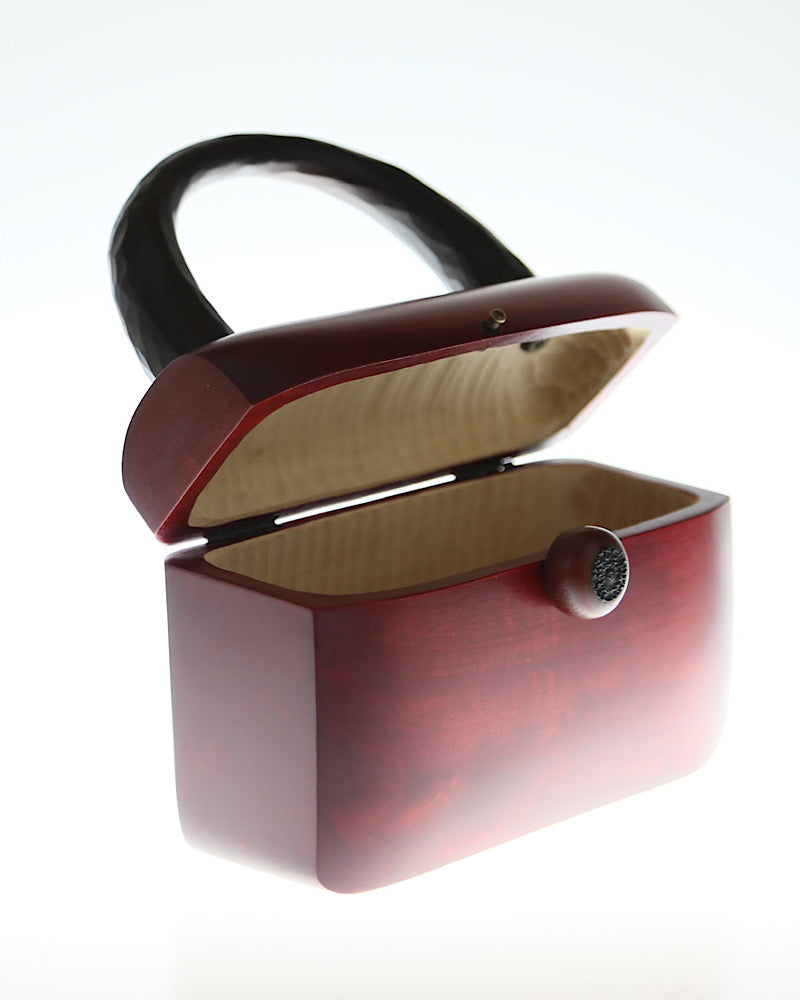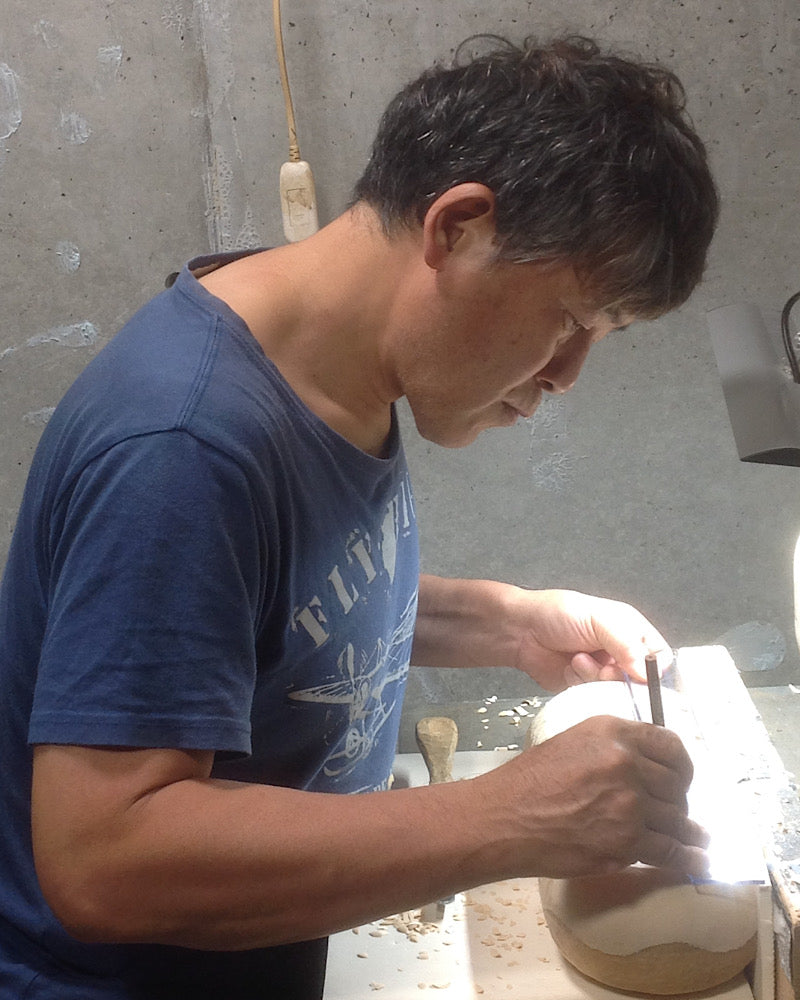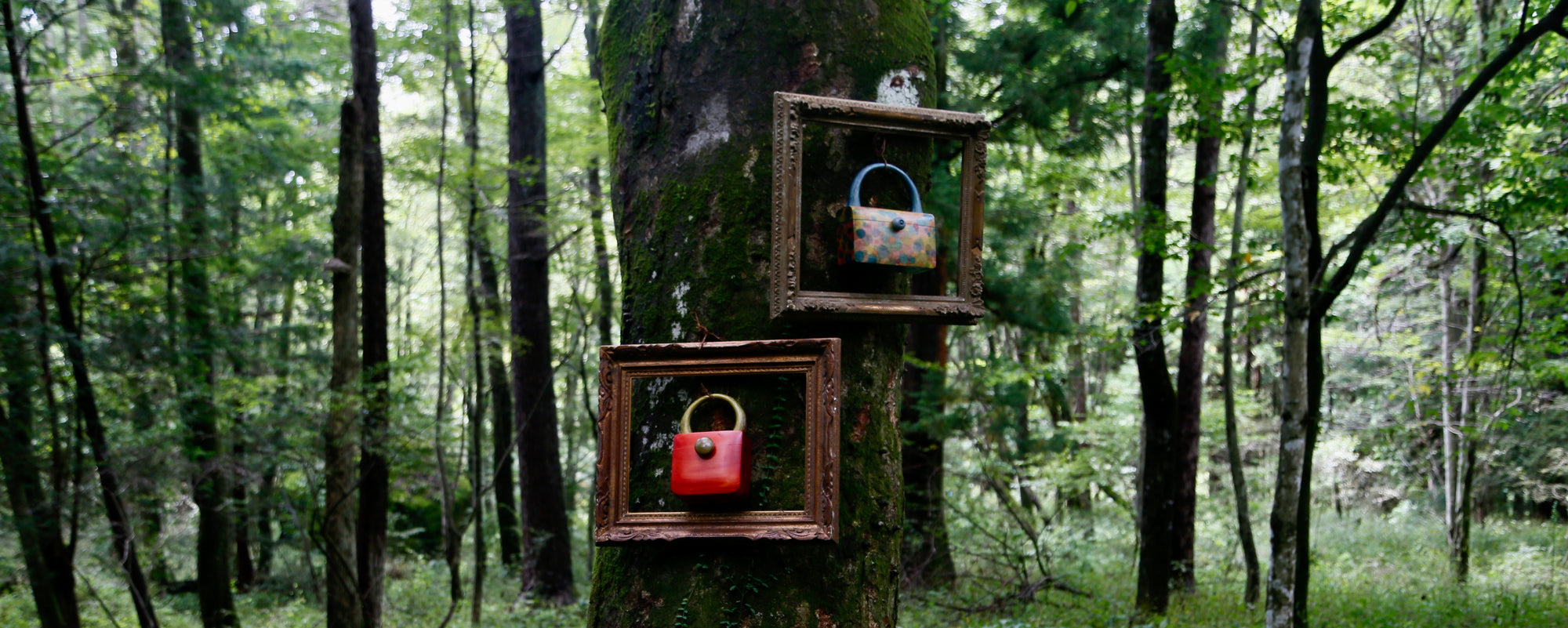Various lacquering techniques are used. These include the use of urushi lacquer, which is a traditional Japanese coating material, and a wipe lacquer finish using raw urushi, black urushi, etc., to bring out the grain of the wood and apply multiple layers of coating.
In addition to urushi lacquer, the wood may also be dyed and then coated with urethane resin paint. In either case, they are water-resistant enough for daily use, so you can go out in the rain without worrying.
A wide variety of designs and colors are available, including gradation, two-tone, and dot patterns. Each piece has a completely different look depending on the type of lacquer, the combination of dyes, seasonal differences in temperature and humidity, and the inspiration of the artist.
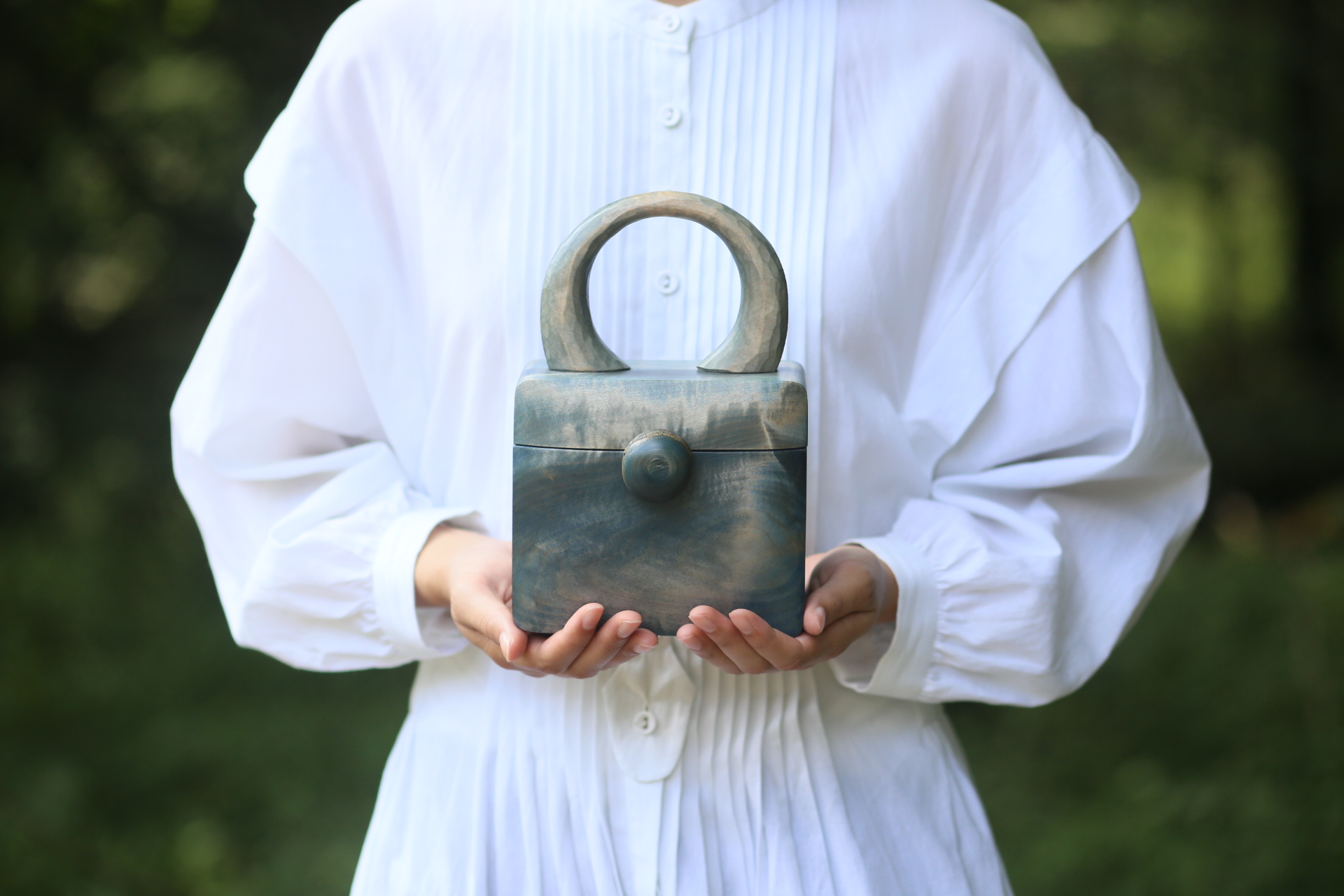 Kinokaban, wooden bag
Kinokaban, wooden bag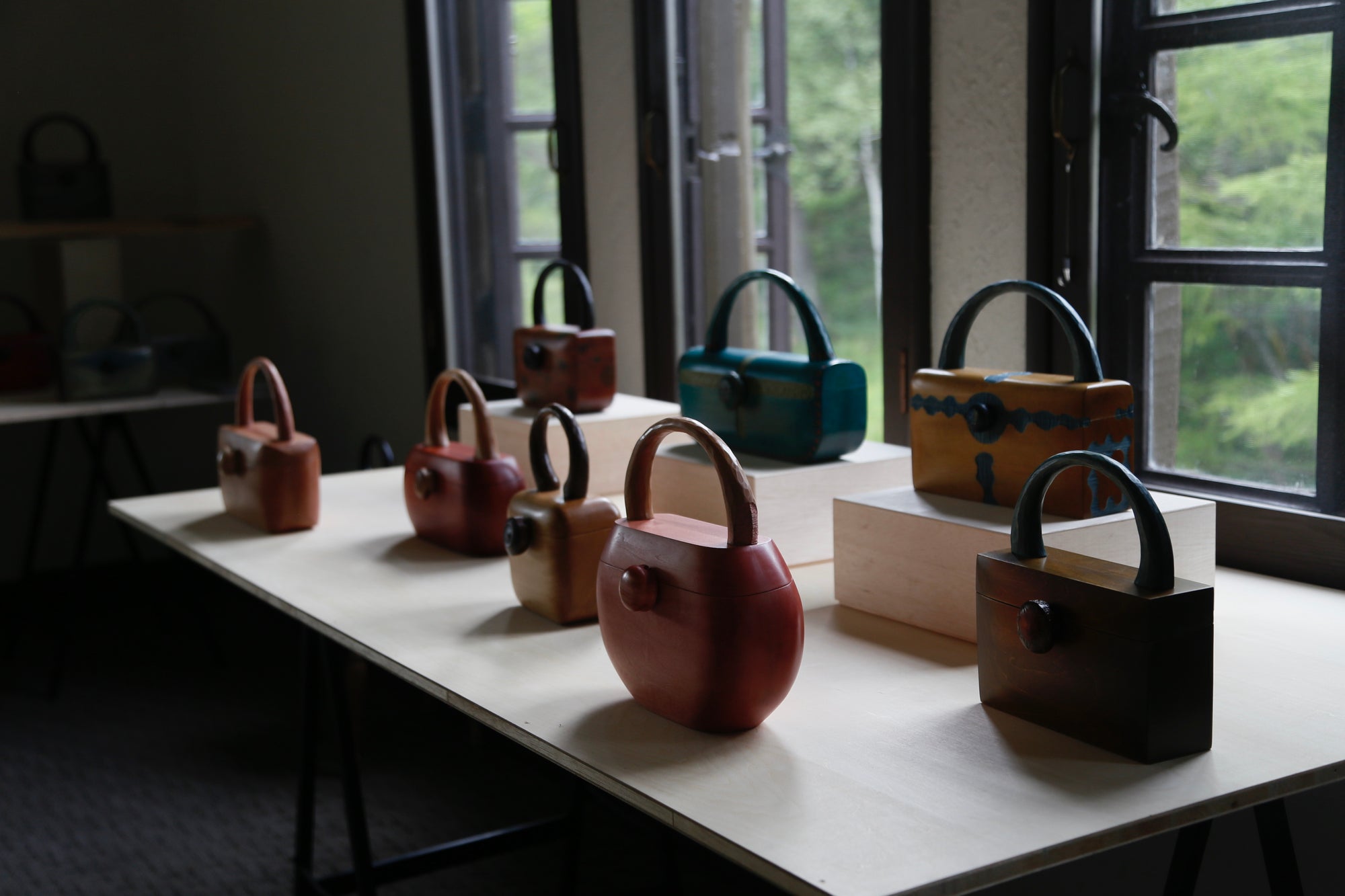 Kinokaban, museum
Kinokaban, museum


